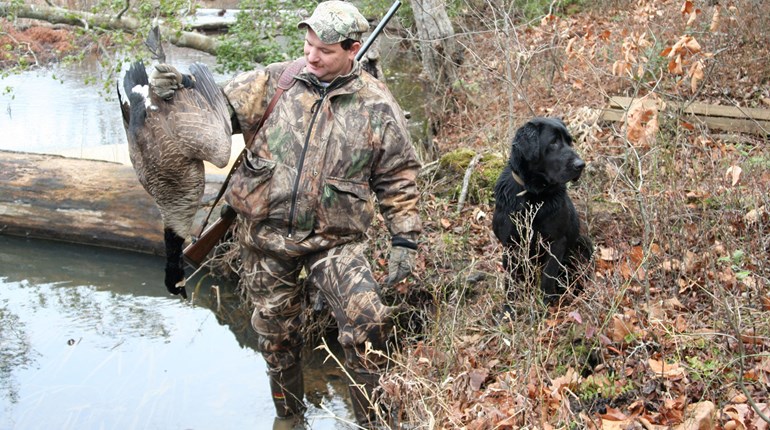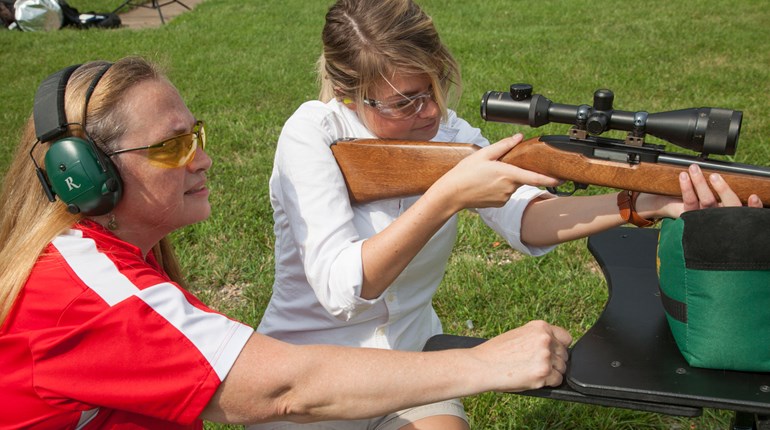
Standard 12-gauge shotgun shells come in 2¾-, 3- and 3½-inch lengths. Basically, the longer the shell, the more pellets are packed into it. Contrary to popular belief, longer shells don’t automatically have more velocity, which means the pattern doesn’t go farther than the pattern from a shorter shell. It’s just a denser pattern, which might or might not matter to you depending on the game and the range.
The straight-up, simple answer to this question is: It’s not bad at all to avoid the 3½-inch shells. You can handily take down any appropriate game with 3-inch or 2¾-inch shells, and in the process, you’ll save some money and save your shoulder. More pellets in the shells means they cost more, and just based on physics, more going out the front end of the gun means more coming back—that is, harder recoil. The 3½-inch loads are more expensive and generate a good bit more recoil than their shorter counterparts.
That said, you should know that a bigger, denser payload of pellets does offer an advantage. When comparing two loads of different lengths with the same shot type and same velocity (fps), the pellets from each will travel the same distance. The difference is that the longer shell, properly choked, has the ability to deliver greater pattern density at longer ranges. Turkey hunters in particular are obsessive about patterning their guns, and you’ll find that a 3½-inch turkey load will put more pellets in a turkey’s head at 40 and 50 yards and beyond, with the right choke, than a shorter load will. More pellets equal more killing power, and although the pellets won’t fly farther or faster (all else being equal), the fact that there are more of them does mean that the pattern, properly choked, should be tighter at extended ranges. That could be important to you if you expect long shots. Some goose hunters feel this way as well, but shooting 3½-inch loads at geese all day is absolutely punishing. Most of us don’t hate geese that much!
Understand that, for safety, you can only shoot 3½-inch shells out of a gun that is marked as having a 3 ½-inch chamber. You can shoot 2 ¾- and 3-inch shells out of the same gun. If you think you might want to shoot 3½-inch shells, it can be smart to buy a 3½-inch gun—they’ll handle just about any size load. Some 3½-inch semi-automatics will have trouble cycling the lighter, shorter 2¾-inch shells, however, and for this reason, a 3-inch gun makes more sense if you don’t think you’ll ever need to fire 3½-inch loads (which, I promise, you’ll never need to do).
All of my shotguns have 3-inch chambers except one 3½-inch dedicated turkey gun from which I shoot 3-inch loads. Left to my own devices, I don’t shoot 3 ½-inch loads at anything. A 3-inch shell is more than enough for ducks, geese, and turkeys, and even less is needed for smaller birds like doves. I have shot plenty of 3 ½-inch loads (even some in 10-gauge) on manufacturer-sponsored hunts because that’s what they wanted me to shoot, and they’re tolerable, but I’ll be honest—a 12-gauge 3½-inch duck load is just not that fun to shoot, and turkey loads are worse. I don’t feel the need to punish my shoulder for a bigger payload. My philosophy is that if I miss a bird, it’s my own fault, not the fault of the shell I’m shooting.
Bottom line: A 3½-inch shotgun shell buys you some pattern density, but unless density at extended ranges is really important to you, you can definitely get just about any job done with a less expensive, less punishing 3- or 2¾-inch shell.















































